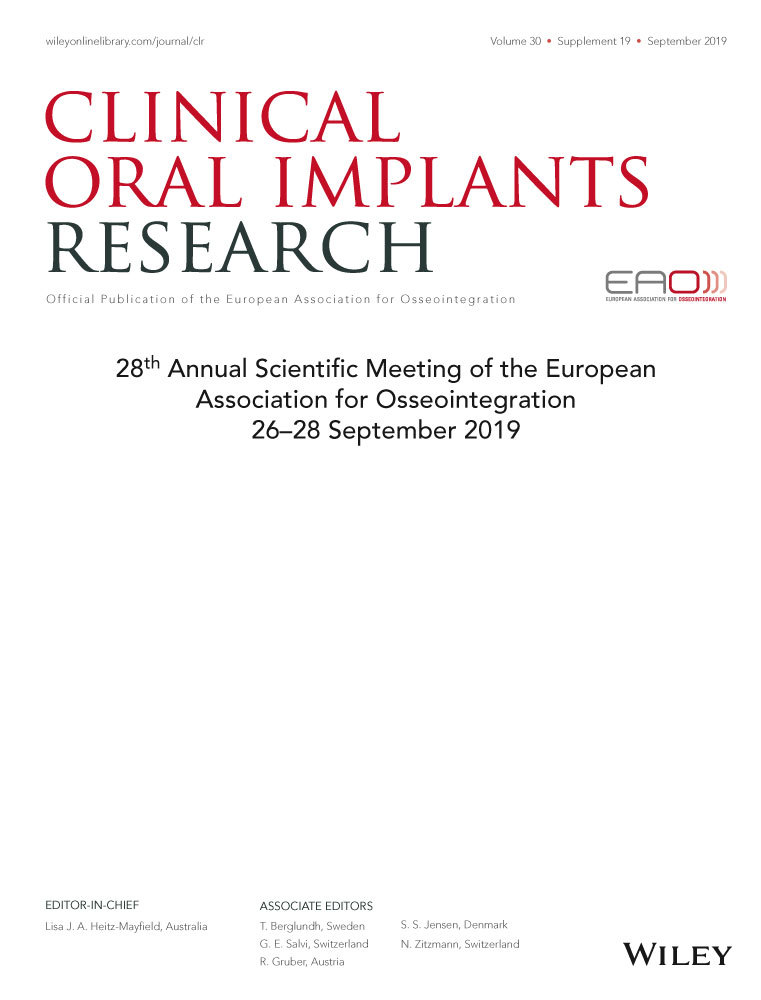Medication-related to osteonecrosis of the jaw affect dental implant success? A systematic review
16270 Poster Display Clinical Research – Surgery
Background
Dental implants are currently the best option for oral rehabilitation of edentulous areas and have a high rate of success in healthy patients. However, dental implants may be jeopardized during the early postoperative, or spontaneously development of osteonecrosis of the jaw related to medication. Bisphosphonates, which are drug related to osteonecrosis of the jaw are reserved in bone for more than 10 years, and the maxillofacial region is more likely to develop osteonecrosis due to the faster
Aim/Hypothesis
The present study aims to assess the success of dental implants and development of osteonecrosis of the jaw in patients under medication-related osteonecrosis of the jaw, by conducting a systematic review.
Material and Methods
An electronic search was performed on English language articles without date restrictions in PubMed Medline and Sciencedirect through March 2019 using the key words Bisphosphonate, Dental implant, Osteonecrosis of the jaw, Medication. The studies references were also searched to identify papers that were not detected using the primary key words at the databases. Two calibrated investigators screened titles and abstracts for potential selection, according to the inclusion and exclusion criteria. Agreement of selection was performed with the use of Cohen′s Kappa (κ). Inclusion criteria- English-language articles describing at least one parameter of success of dental implants in patients who received oral or intravenous medication associated to osteonecrosis, prior to or during dental implant placement. Due to the scarce prospective studies was decided to include retrospective studies, and case series with more than 5 patients. The comparison and outcomes (PICO) according to the PRISMA s
Results
The initial search identified 406 studies in the databases+ after the initial screening of titles and abstracts, 344 studies were excluded. Once the abstracts of the remaining 62 articles were reviewed, 41 studies were excluded due to the lack of inclusion criteria. The full-text of the remaining 21 studies were reviewed, and 4 studies were excluded due to missing data. Eventually, 17 studies were selected for qualitative assessment. 4 studies fulfilled the inclusion criteria. Eight studies were selected to assess time of biological failure due to osteonecrosis associated to medication development. 106 cases of osteonecrosis associated to medication related to dental implants were described in the eight studies, the mean interval between dental implant placement and osteonecrosis development was 42 months. Three studies showed relationship between peri-implantitis and osteonecrosis of the jaw in patients who were treated with oral or intravenous bisphosphonates.
Conclusion and Clinical Implications
The use of antiresorptive drugs could be related to the development of osteonecrosis of the jaw around dental implants and loss of them, especially in patients treated with high dose of bisphosphonates. Osteonecrosis of the jaw related to medication could appear in implants inserted before starting the antiresorptive drugs, and could be initiated with the peri-implantitis development.




